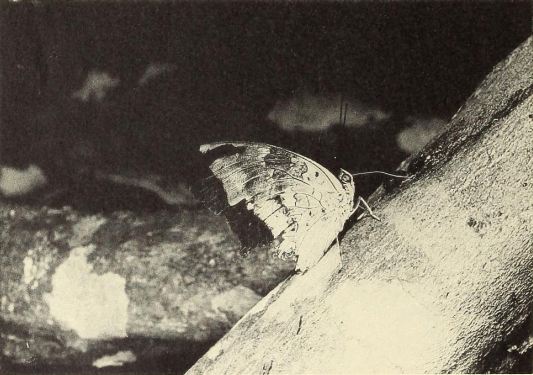William Beebe
Department of Tropical Research
New York Zoological Society, New York 60, N. Y.
I. Introduction
INSECT repellents have earned a generous representation in entomological study and literature, owing perhaps to their economic importance.
Attractants appertain rather to pure science and are more directly related to our studies of animal behavior. They are abundant in variety and varied in efficiency and, at the Zoological Society’s station at Simla, Trinidad, B.W.I., are brought to our attention the moment we leave the laboratory. This will be evident from a few random examples.
Under odor we may mention tree-bait, with the old familiar mixture of such ingredients as molasses and beer, attractive more especially to moths at night; sexual odors, as the well known drawing of males to a caged female from as far away as two to six miles; plant odors, operating sometimes indirectly, as when an adult butterfly oviposits on a larval food-plant. Finally, we have the olfactory focus of over-ripe fruit or decaying mouse which influences a whole complex of eager receptors.
Light is one of the best-known attractors, as indicated by the swarms around an electric light globe or reflected light from a sheet. The power of color is shown when an iridescent morpho butterfly swoops down upon a bit of blue paper. The auditory attractant of a cicada is clearly evident to our senses, and the exact tone of the wings of a female mosquito is an attractant to her mate.
More mysterious than any of the foregoing is the impelling force of mass migration, a yielding to an instinct which, at least basically, is inexplicable. At this moment, thousands upon thousands of insects of almost all orders, are pouring southward through a sixty-foot wide pass near Rancho Grande, Venezuela, repelled from their place of birth or attracted to an unknown area by some all-inclusive impulse.
The chief object of this casual and heterogeneous list of attractants is to point out that certain ones are selective, carrying their messages to individual species, while the remainder are more or less general, appealing to a wider range of recipients.

